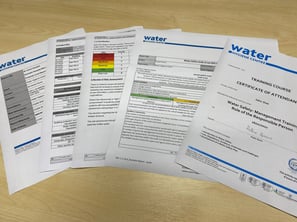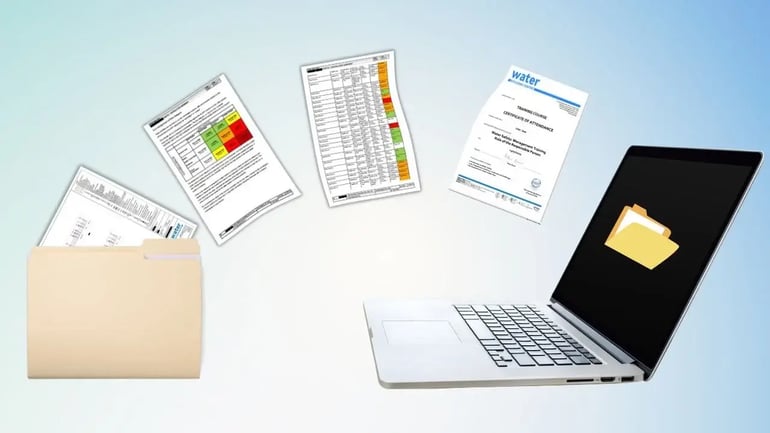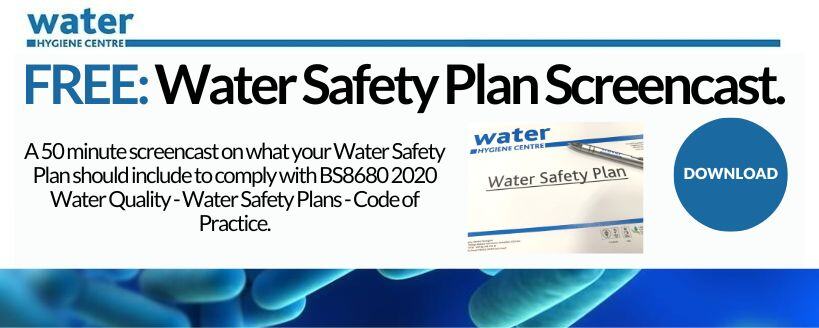When managing Legionella and other waterborne pathogens we must keep concise, accurate water safety records of all our activities. HSG274 Part 2 sections 24 – 26 and HTM04-01 Part B Para 6.74 – 6.79 refers to record keeping and data management.
Businesses with five or more employees are required to keep records of any significant findings from a risk assessment including any identified Legionella risks and the steps taken to prevent or control them. Records must be retained for the period they remain current and for at least two years afterward, except for records kept for monitoring and inspection, which should be kept for at least five years.
Paper v Electronic logbooks
Historically, records have been held as hard copies in the form of Legionella Logbooks. As technology evolves and improves, so do the alternatives to paper Logbooks. You only have to search online for “Electronic Logbook”, and you will be directed to a multitude of systems that are currently readily available.
When you consider the volume of data that you may have to manage, for example, in a healthcare environment or a hospital site with large and complex systems, the amount of data can be overwhelming. Storing all this data on paper, and more importantly, being able to access a particular piece of information quickly can prove problematic.
So, what Legionella records do I need to keep?
 Written or electronic records should contain accurate information about who completed the work and when it was carried out. All records should be signed, verified, or authenticated by a signature or other appropriate means. Records should include details of the:
Written or electronic records should contain accurate information about who completed the work and when it was carried out. All records should be signed, verified, or authenticated by a signature or other appropriate means. Records should include details of the:
- Individuals responsible for conducting the Legionella risk assessment, managing, and implementing the written scheme;
- Legionella risk assessment findings;
- “Written” control scheme and details of its implementation;
- Operational details of the system, for example - in use/not in use;
- Monitoring inspection results including dates and any corrective actions required, as defined in the written scheme of precautions, such as:
- Results from chemical/microbial analysis;
- Usage of any Water treatment chemical;
- Confirmed correct operation of water treatment equipment through inspections and checks;
- Confirmed correct and safe operation of water systems components through inspections and checks;
- Any maintenance to the water systems, equipment, and water treatment system;
- Cleaning/disinfection procedures including certificates and reports;
- Method Statements for any work carried out.
Other Considerations
Most if not all the electronic systems currently available, also have the capacity and functionality to;
- Manage your assets;
- Schedule planned preventative maintenance;
- Automatically issue the work to the workforce via handheld devices;
- Capture all results from the maintenance work in real-time;
- Notify you of non-conformances in real-time.
There is also the benefit of all records being in one place on a cloud/portal whereby they can be easily accessed or interrogated remotely by, for example, managers and members of the Water Safety Group.
Another great advantage is that reports can be generated, normally with a few clicks of a mouse, to satisfy contractual obligations such as monthly KPI reports and assurance reports for the client or Water Safety Group in a format that is easily communicated by email. Electronic record-keeping systems also make auditing a much-simplified process when compared to hard copy logbooks.
Conclusion
Technology plays a critical role in driving efficiency, maximising the use of available resources, improving efficiency, streamlining operations, and through real-time reporting, helping to achieve and maintain compliance. It is undoubtedly the way ahead.
Feel free to reach out if you have any questions about the issues mentioned above or if you would like to consult with one of our experts on water hygiene.
Editor’s Note: The information provided in this blog is correct at the date of original publication – May 2023.
© Water Hygiene Centre 2023









